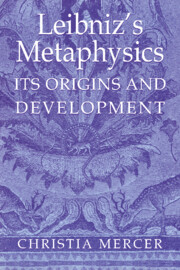Book contents
- Frontmatter
- Contents
- Acknowledgments
- References to Leibniz's works
- Introduction: first truths and half truths
- PART ONE METAPHYSICS OF METHOD
- PART TWO METAPHYSICS OF SUBSTANCE
- PART THREE METAPHYSICS OF DIVINITY
- PART FOUR METAPHYSICS
- Appendix I (Not exactly) First truths
- Appendix II Leibniz's original assumptions
- Bibliography
- Index Locorum
- Index
Introduction: first truths and half truths
Published online by Cambridge University Press: 12 March 2010
- Frontmatter
- Contents
- Acknowledgments
- References to Leibniz's works
- Introduction: first truths and half truths
- PART ONE METAPHYSICS OF METHOD
- PART TWO METAPHYSICS OF SUBSTANCE
- PART THREE METAPHYSICS OF DIVINITY
- PART FOUR METAPHYSICS
- Appendix I (Not exactly) First truths
- Appendix II Leibniz's original assumptions
- Bibliography
- Index Locorum
- Index
Summary
In October 1687, Leibniz set out from his home in Hanover for an extended tour of Germany, Austria, and Italy. His official duty was to research the history of the House of Brunswick; his personal desire was to effect religious and political peace in Europe. He visited public archives and personal libraries; he conversed with politicians, monks, and cardinals. Besides historical research and peace proposals, he was engaged in other projects as well. During his residence in Vienna, for example, he met with the Austrian emperor to whom he recommended, among other things, the reorganization of the economy, the formation of a general research library, and the establishment of an insurance fund; he worked on proposals for instituting an Imperial College of History, for reforming the coinage of Austria, Brunswick, and Saxony, and for lighting the streets of the city; and he wrote a paper on motion, which he later published in one of the leading journals of the time. Leibniz liked to keep busy. It was in the midst of such a startling array of activities that he produced one of his most famous texts, a short paper entitled First truths. Composed on Italian paper, First truths was written during the months following his year-long stay in Italy (March 1689 to March 1690).
- Type
- Chapter
- Information
- Leibniz's MetaphysicsIts Origins and Development, pp. 1 - 20Publisher: Cambridge University PressPrint publication year: 2001



